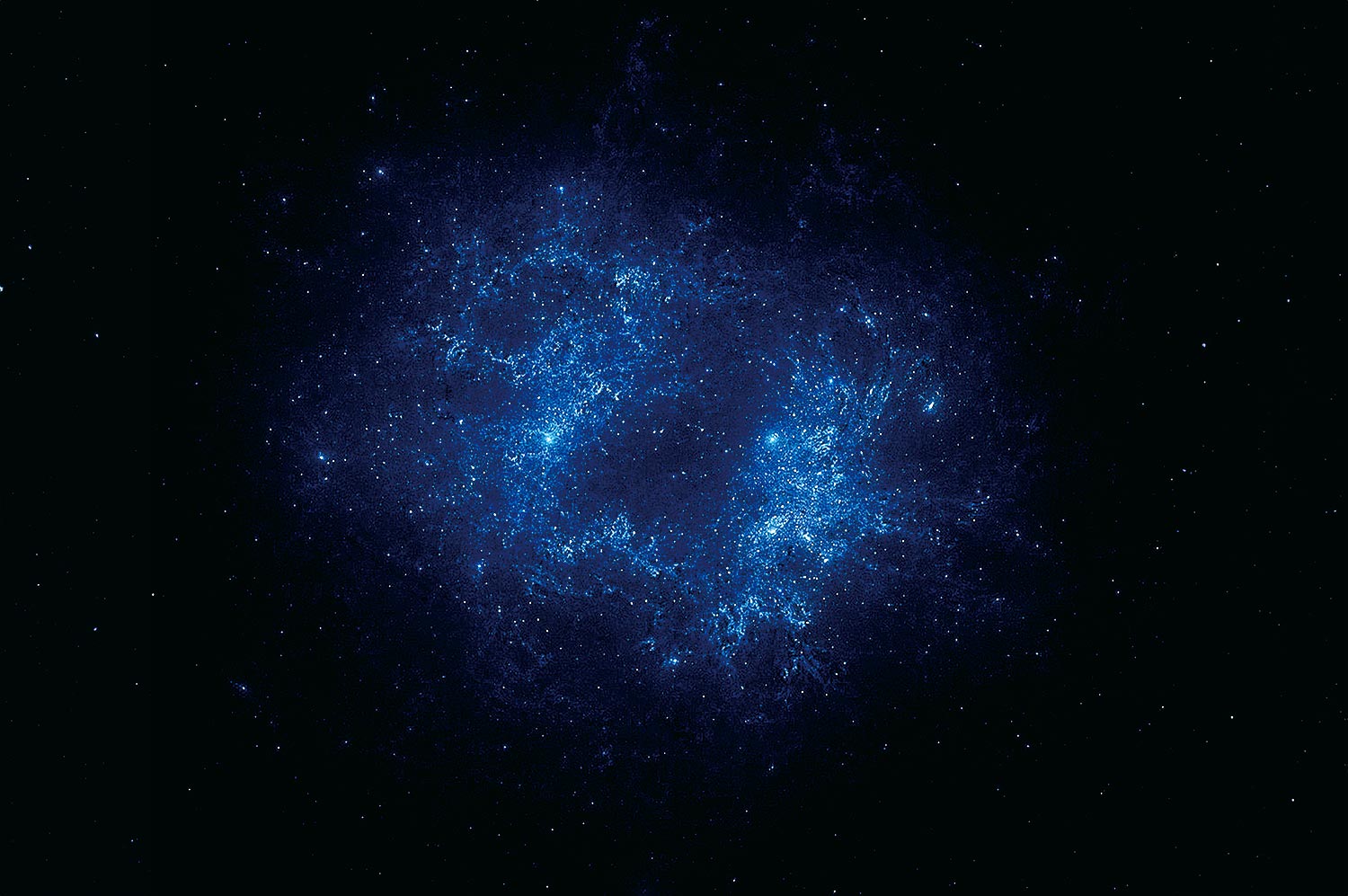
Seeing is a process to perceive the shapes and colors of objects with the eyes. This has been a great curiosity for many people since ancient times.
Empedocles, an ancient Greek philosopher, thought that we can see objects as beams are emitted by the eyes, and Aristotle thought that colors exist in objects. Descartes said that when light touches an object, it is transformed into color and enters our eyes. It wasn’t until the 16th century when people finally figured out that we recognize an object as the light reflected on the object comes into our eyes.
Like this, light is absolute in perceiving objects. Without light, our eyes can perceive neither the shape of an object nor its color.
All things revealed through light

A straw in a glass of water looks bent, and the legs under the water look short and thick. This is due to the refraction of light.
Light generally has a nature to go straightforward, and its speed varies, depending on what material it passes through. To walk through a crowded downtown area, you will bump into people and it will take longer to go through. It is the same with light. While exchanging energy with the atoms that make up the material, light slows down. The reason the direction of light changes when it enters from one material to another is that the speed of light changes, depending on the material. A part of the light that bounces off a boundary is called reflection. The light reflected from an object stimulates the visual cells of the eye, and the signal is transmitted to the brain to perceive the object.

Just as red comes to mind when we think of an apple, the objects that we see around us have certain colors as well as certain shapes. How do we perceive the colors of objects?
The light that we can perceive is called visible spectrum, which can be divided into the beautiful colors of a rainbow. They are grouped into three groups: red (R), green (G), and blue (B), and these are called primary colors of light1. With appropriate combinations of these three lights, all the colors of light can be made. When red, green, and blue are mixed in the same ratio, they make white. When red and green are mixed in the same ratio, they make yellow (Y), and when red and blue are mixed, they make magenta (M), and when green and blue are mixed, they make cyan (C). Of course, when all three lights are missing, it looks black. All kinds of imaging devices such as cell phones, monitors, and digital cameras that we use produce colors and images by combining these three primary colors of light.
1. Primary colors of light refer to red, green, and blue, the basis of light of all colors. They are different from the primary colors of pigment (magenta, cyan, and yellow) which are the basis of all the colors.
A colored object absorbs a portion of light and reflects the rest. The reason apples look red is that they reflect the red light and absorb the other light. In other words, we can say that an apple looks red due to light rather than that it is red itself.
Without light, we cannot know the shape and the color of an object. In order to visually perceive an object, there has to be light. Since the light reflected by the object enters the eye and allows us to recognize its shape and color, all objects are revealed through the light.
Light that is revealed through all things

There is definitely light from the stars or the galaxies, but space looks dark. Although sunlight or starlight is incomparably brighter than a light bulb or a fluorescent lamp used in our houses, outer space is darkness itself. Why is that?
In order for us to perceive light, light must come into our eyes, but there is almost no material in space to reflect light for it to enter the eye like on the earth. If you assume that the light source is in front of you, you can see a very bright light source because the light enters your eyes. However, even if the light source is bright, when you are facing away from the light source, it looks dark because there is no light coming into the eye. What if there are many objects around? Because the light reflected by the objects comes into your eyes, you can see the light although the light source is behind you.
You can actually experience this. The difference in brightness between a light bulb you are holding in a spacious empty site and in a small room is evident. Since the light reflected in the empty site and enters the eye is very little, it relatively looks dark. But it seems a lot brighter inside a room since the light reflected by the walls in all four sides comes into the eye. This is also how the moon in the night sky works, too. The moon is visible because it reflects the sunlight. The moonlight is actually the sunlight that you see at night.
Like this, if there is no material around us, we cannot sense the light. Just as an object is exposed through light, light also reveals its existence through an object.
The invisibility cloak, which allows people to become invisible when put on, has stimulated children’s imagination and awakened adults’ innocence of childhood, and it has been often seen in the movies and novels. In the Harry Potter series, Harry and his friends wear an invisibility cloak and freely go every part of their school in secret. What if an invisibility cloak actually existed?
Scientists are working on the realization of an invisibility cloak, which was only considered as part of imagination. In 2006, Professor John Pendry of the U.K. who was at the forefront of the development of the invisibility cloak, presented a material that could be used for it. When the light going straight met this artificial material, it detoured like when water meets a rock. The material with such characteristics that do not exist in nature is called metamaterial. However, magic did not happen in the real world. The invisibility cloak that is currently developed only works for the light of certain areas such as lasers, and it can hide only materials like cells.
Light is the most prevalent and fastest in the universe. Light existed since the birth of the universe. From that light, everything in the universe came to exist. Light is the source of all things. If there were no light, the entire universe would have gone beyond the darkness to a state of nothingness2. Can we imagine a world and the universe without light? That is why many people have regarded light as an absolute being from ancient times, and the word light contains the meaning of the truth.
2. According to the big bang theory, what existed before anything else in the early universe is light, and basic particles and matters were made from the light. For this reason, scientists assume that the universe would not have been born if there hadn’t been light.
Light reveals all creation, and the existence of light is revealed through all creation. Isn’t this even more magical than an invisibility cloak?